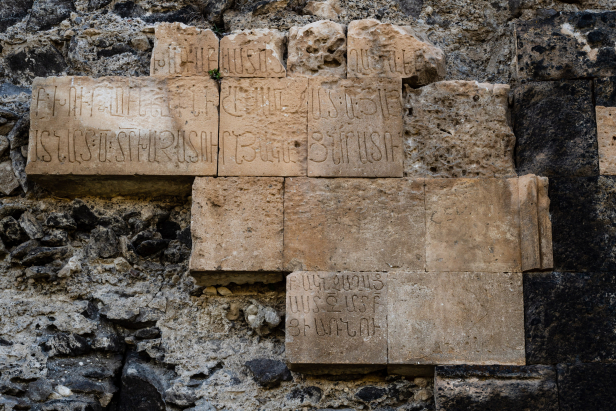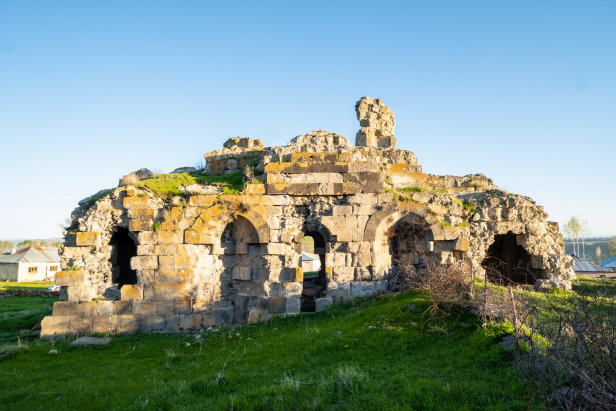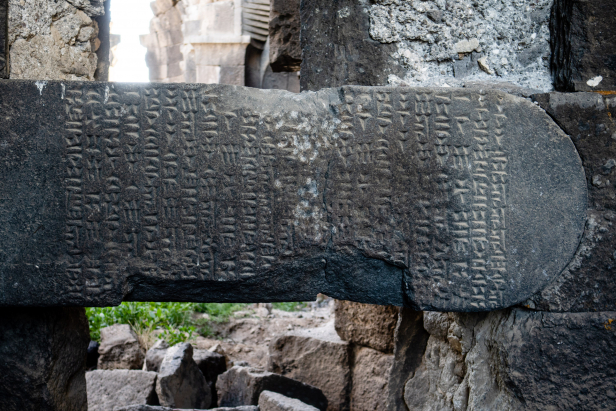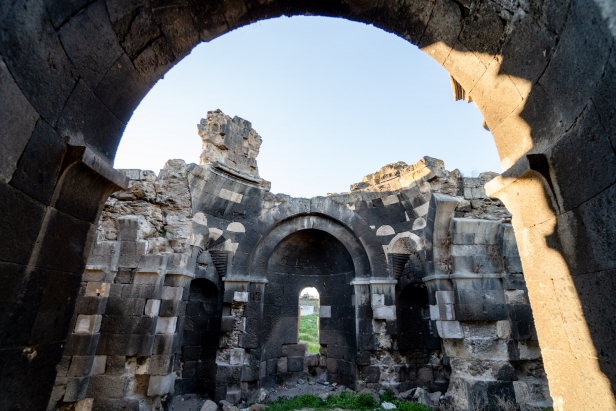Ardzvaber Monastery
(Salmanağa Köyü Ardzvaber Manastırı)
/ By Josh
Cost: Free
Great for: Armenian History, Church Architecture, Kingdom of Vaspurakan
Occupying a low hill in the midst of the village of Salmanağa is what remains of the once grand Ardzvaber Monastery. With only a small portion of the church roof and patches of facing stones left in place, the ruin is all that is left of what was once a grand church and monastic complex
While the building is in a sad state, enough of the walls and details remain to point to the original design. The remaining church of Ardzvaber Monastery, Surp Astvadzdzin, follows in the architectural tradition of the St Hrispime church consisting of a tetraconch centered on a broad pyramidal dome. (St Hrispime is one of the most important figures in the establishment of Christianity in Armenia and the church built on the site of her martyrdom is one of the iconic designs in the Armenian architectural tradition. St Hrispime is in Vagharshapat Armenia and can be visited today.)
The east and west apses are made deeper with the use of barrel vaults giving length to the naos and directing the focus of the interior to the eastern apse. Between the four apses, occupying the corners of the building are four rooms (sacristies and or vestiaries) making for a rectangular footprint. As is common in the Armenian architectural tradition deep ‘V’ shaped niches are cut into the masonry between the tall narrow windows. Between the pilasters of the apse vault is a deep circular niche with a set of fanning stone steps making the transition from the deep niche to the squinch above. This unusual detail is the same as Surp Khatch of Aghpak and the famed St Hrispime Church in Armenia.
One of the most unique aspects of this church can be found in the north-east sacristy where a large basalt stele carved with an Urartian inscription has been turned sideways and used as a lintel. The Urartu civilization was an early Iron Age civilization that thrived in the area from the 9th to the 6th century BC.
The stele reads:
“By the power of God Haldi, Minua son of Ishpuini erected this stele for God Elipru. With the greatness of God Haldi, mighty king, great king, king of Urartu, and lord of the city of Tushpa, with the power of God Haldi, Minua, son of Ishpuini, erected this stele for God Elipru. By the greatness of God Haldi, I am Minua, son of Ishpuini, mighty king, great king, king of the Urartu, and lord of the city of Tushpa.”
The monastery is believed to have been founded in the mid 7th century with the current building possibly dating from this first establishment (making it roughly the same age as the St Hrispime church that it was modelled after), though it is also possible that the church was rebuilt to its current form sometime later. The Ardzvaber Monastery grew to regional prominence over the centuries, thanks in part to its productive scriptorium.
Subscribe to The Art of Wayfaring

How To Get There
General
The Ardzvaber Monastery is located in the upper-eastern end of the village of Salmanağa near the town of Erciş on the north shore of Lake Van. The majority of the roads in the area are narrow and dirt; your best choice is to take the direct route from Erciş to the village of Salmanağa.
For more about car rental and driving in Turkey make sure to read our full drivers guide.
Where To Stay
The largest town in the area, Erciş, actually has a few hotels to choose from ranging from a few cheaper options in the town center and another higher-end hotel near the lake shore. For a better selection the city of Van is the regions main center with a wide range of hotels to chose from.
Other Tips
Planning on visiting Ardzvaber? Make sure to check out our guides to the Churches and Monasteries of Vaspurakan and Lake Van.
Subscribe to The Art of Wayfaring
Have any tips or info to add? Spot any mistakes? We’d love to hear about it.



